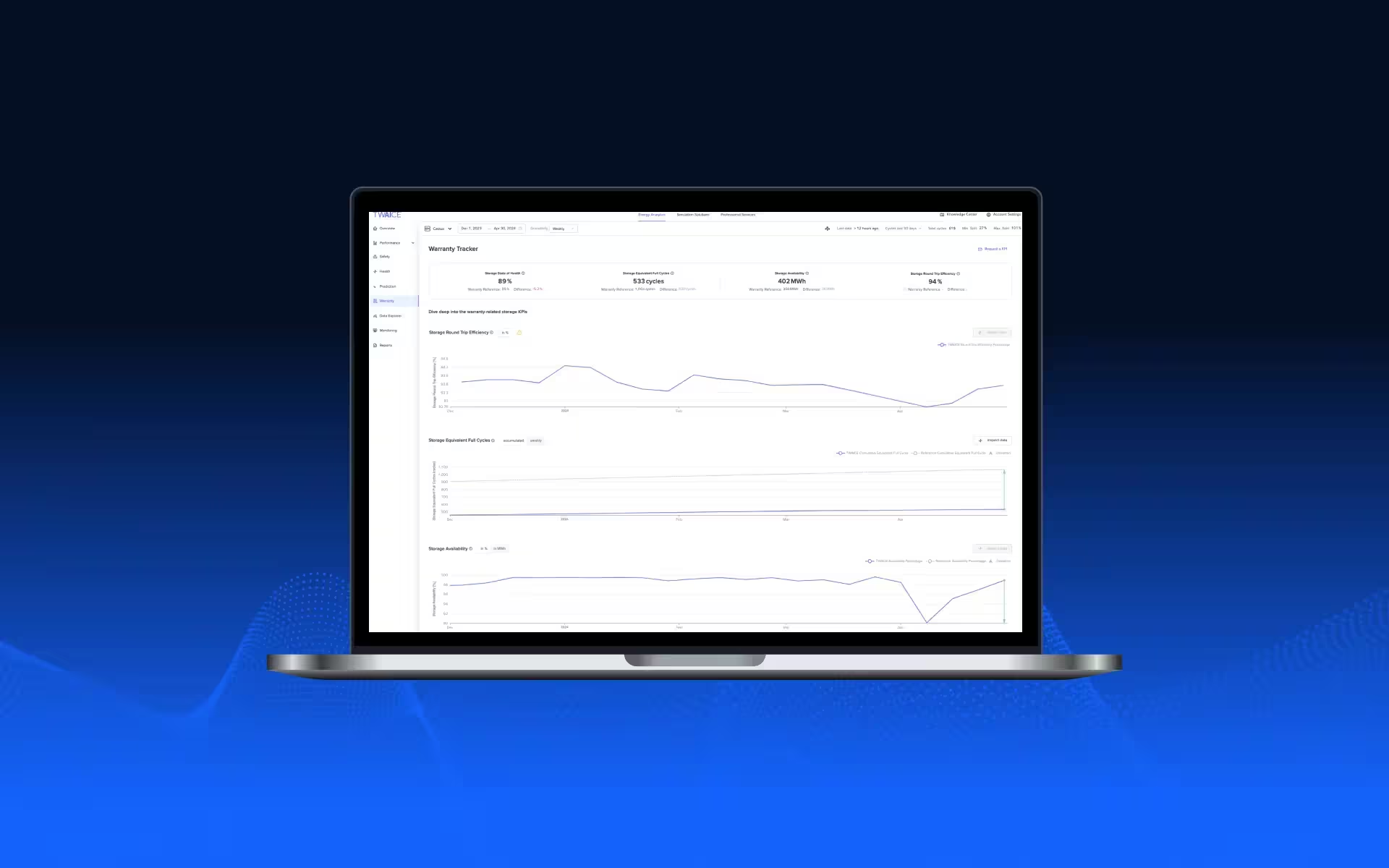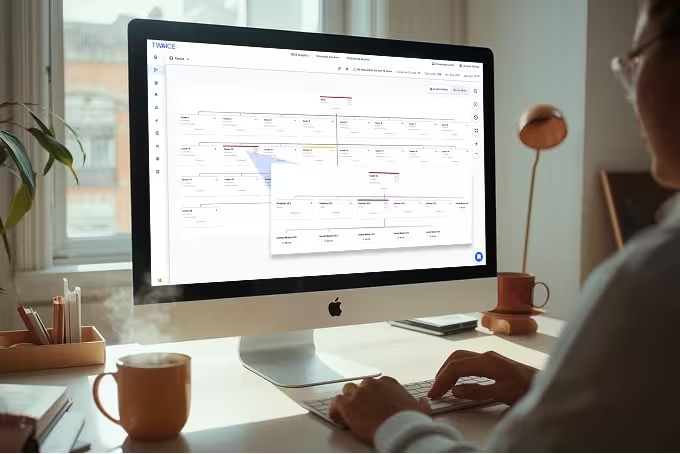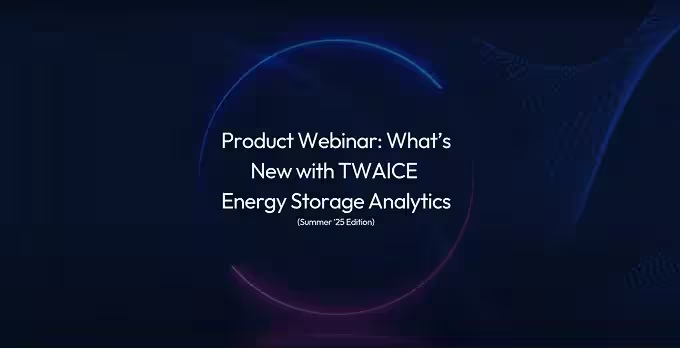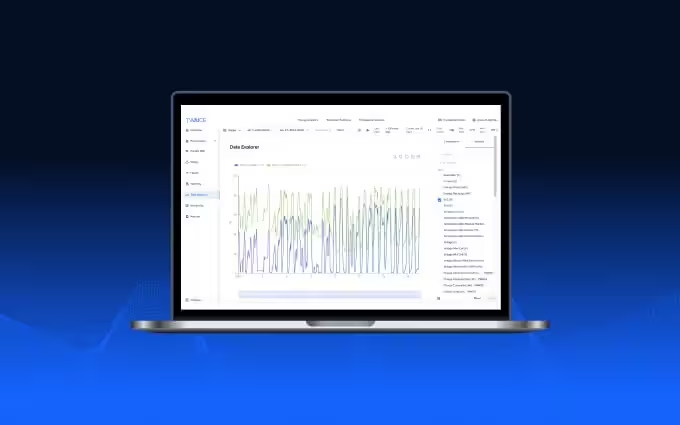Track Warranty Contracts and Optimize Performance Using Roundtrip Efficiency (RTE)
Roundtrip Efficiency (RTE), one of the most important BESS KPIs, can now be tracked in TWAICE Energy Analytics. TWAICE calculates it based on the battery, inverters and transformers efficiencies, helping asset owners & operators track warranty contracts more accurately.

Roundtrip Efficiency represents the ratio of energy output to energy input during a complete charge-discharge cycle, expressed as a percentage. Some energy is always lost to factors such as internal resistance or heat generation, meaning RTE is always less than 100%.
RTE directly affects cost savings and performance of energy storage systems. A high RTE means lower energy losses and better economic returns, whilst a low RTE indicates inefficiencies that might require technical or operational improvements.
Roundtrip efficiency is important for a variety of use cases.
- Enforcing battery performance guarantees: Battery manufacturers guarantee a minimum RTE in their warranty contracts. If RTE drops below the contract threshold before the warranty expires, the owner can file a claim for repair, replacement or financial compensation.
- Maximizing profits in wholesale markets: Energy storage operators buy electricity when it’s cheap and sell it when prices are high. A high RTE means less energy loss, allowing for high profitability in energy arbitrage.
- Reducing energy losses in battery storage operations: RTE helps operators detect inefficiencies caused by heat, degradation or poor charging profiles. Batteries with low RTE may need cooling improvements, software updates, adjustments in the operation strategy or maintenance.
However, in many cases, asset owners are not able to continuously access the RTE of their system as RTE tests are usually conducted once per year during maintenance cycles. This means that for the majority of the system’s lifespan, inefficiencies go undetected and unaddressed, leading to unnecessary financial losses. A senior manager at a BESS company summarizes this problem:
"We only get these RTE values for the entire system once a year—the rest of the year we are flying blind. If the system is not making as much revenue as our customers are planning to do, it can have many different reasons, but we do not know where to start. Having the RTE for all different components continuously available ensures that we can ensure a profitable operation, and that troubleshooting is done effectively and quickly."
Use RTE to Track Warranties and Optimize Performance
With TWAICE’s latest KPI, Roundtrip Efficiency, asset owners no longer need to operate in the dark. They can continuously track RTE, ensuring compliance with warranty contracts, make warranty claims more easily, minimize revenue losses, and optimize trading strategies.
To provide an accurate RTE, TWAICE monitors and analyses performance across the battery components, inverters and transformers, aggregating data to the system-level. Users receive actionable insights, helping them to maintain optimal performance and prevent financial losses.

Who Benefits?
Asset Managers: Continuously access your systems’ RTE, ensuring they meet contractual obligations and optimize BESS performance.
Performance Engineering and O&M Teams: Detect and resolve inefficiencies before capacity tests, reducing costly retests and downtime.
Traders: Gain accurate insights into system efficiencies for trading algorithms.
Suppliers & Manufacturers: Ensure systems meet contractual guarantees, reducing warranty disputes and service penalties.
Conclusion
Accessing RTE continuously can assist owners and operators significantly improve BESS management and operations. Furthermore, this is the first KPI inTWAICE Energy Storage Analytics that uses system-level data, combining batterydata with additional components, in this case inverters and transformers. Stay tuned for more system-level KPIs!
Want to learn more? Ask our experts in a 1:1 demo.
Sign up for the next live group demo and learn how TWAICE can transform your BESS operations. In just 30 minutes, you’ll get a demo of key features and use cases, and engage with our product experts for a live Q&A.



.avif)

